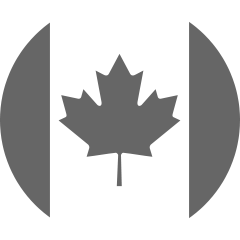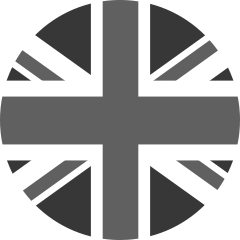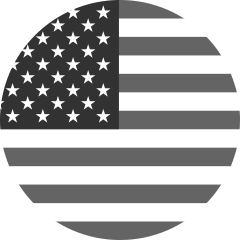The Ultimate Beginner’s Guide to Triathlon Training
If you’re thinking about racing in a triathlon, you’re in for an amazing experience. But it’s important to know that there’s a lot that goes into triathlon training.
After all, you’ll need to practice three different sports—swimming, cycling, and running—and that can feel overwhelming, to say the least.
Here’s the good news, though: it doesn’t have to be. Your triathlon training can be fun, rewarding, and impactful, setting you up for an amazing race day.
It’s just a matter of having a clear understanding of what you need to do, when, why, and how.
In this comprehensive triathlon training plan for beginners, you’ll learn everything you need to know to get ready for your race.
Can You Do a Triathlon?
Absolutely. Throughout triathlon training and during your race, you’ll meet triathletes of every shape, size, age, and ability. And every single one of them was a beginner at one point.
The triathlon community is incredibly friendly, supportive, and inclusive because everyone is on their own unique journey through the sport.
How Far is a Triathlon?
There is a wide range of triathlon distances, ranging from super sprints to ultra triathlons. But the four standard distances are:
- Sprint triathlon: 750-metre swim, 20-kilometre bike ride, 5-kilometre run
- Olympic triathlon: 1,500-metre swim, 40-kilometre bike ride, 10-kilometre run
- Ironman 70.3: 1,900-metre swim, 90-kilometre bike ride, 21.1-kilometre run (half marathon distance)
- Ironman 140.6: 3,800-metre swim, 180-kilometre bike ride, 42.2-kilometre run (full marathon distance)
How to Choose the Right Triathlon for You
Finding the perfect race is a matter of determining your goals, deciding on a distance, and then figuring out where you want to go for your triathlon.
Most beginners choose to start with a sprint or Olympic triathlon and work their way up, but this all depends on your personal goals, fitness level, and the amount of time you’re able to dedicate to training.
Want to learn more? We share everything you need to know in our Race Guide detailing How to Pick Which Type of Triathlon Is Best for You.

8 Core Facets of Triathlon Training
There’s a lot that goes into triathlon training. And, while the specific details of how you train will vary based on the race you choose, there are a few consistent things that apply across the board.
1. Setting Goals
As we mentioned in the previous section, triathlon training starts with—and should be rooted in—setting specific and achievable goals.
Your goals are deeply personal, but they can range from simply crossing the finish line to achieving a desired time and anything in between.
But whatever your goals, establishing clear objectives for your race helps guide your training plan and keeps you motivated throughout the process.
2. Triathlon Training Periods
Triathlon training isn’t as simple as just going for swims, bike rides, and runs.
Instead, triathlon training typically follows a periodization structure which involves dividing the training into distinct phases.
-
Base Phase
The base phase is the foundation of triathlon training and focuses on building endurance and aerobic capacity.
During this phase, the emphasis is on developing a solid cardiovascular base through long, steady-paced workouts.
-
Build Phase
In the build phase, the focus shifts to increasing intensity and adding specific workouts to enhance speed, strength, and race-specific skills.
Your workouts become more challenging, often incorporating things like interval training, tempo runs, hill repeats, and higher-intensity swimming and cycling sessions.
-
Peak Phase
The peak phase, also known as the taper, is the period leading up to the race.
During this phase, training volume decreases, and intensity is reduced to allow for recovery and optimal performance on race day.
The focus is on maintaining fitness, fine-tuning race strategies, and allowing the body to fully recover and reach its peak performance level.
-
Transition Phase
After the race, a transition phase is often included to facilitate recovery, rest, and transition to off-season training or other goals.
This phase allows your body to recover both physically and mentally from the demands of training and racing. It may involve reduced training volume, cross-training activities, and time for reflection and setting new goals.
It often even involves some time with no training whatsoever to help you rest your body and mind.
The duration of each phase will vary depending on the length of your race, but the base, build, and peak phases typically last several weeks to a few months.
We know what you’re thinking: how are you supposed to know what phase to be in at what period and what you’re supposed to do during each one? And that’s where following a training plan comes into play—but we’ll talk more about that later.
It goes without saying, but you’ll need to work on your proficiency in multiple disciplines in order to race in a triathlon.
Here’s the thing, though: triathlon training doesn’t just cover swimming, cycling, and running. You’ll also need to work on your strength and flexibility as well.

How to Maximize Your Triathlon Training
The last section focused on the theory behind triathlon training, but now it’s time to explore what you need to do to put it all into action.
Follow a Triathlon Training Plan
If you’re feeling overwhelmed by everything we mentioned in the previous section, that’s understandable.
But don’t worry—that’s where triathlon training plans come into play.
Your triathlon training plan acts as a roadmap for you to follow that will take you from your first workout to the day of your race.
Your training plan will tell you:
- Which phase of training you’re in
- What kind of training you need to do each day
- How long and how far to go during your training
- Drills to follow for every daily workout in every discipline
- When to take active rest days each week
- Your progress over time
Following a triathlon training plan means you’re not just guessing at it—you’re doing exactly what you need to do to have a successful race. All you have to do is show up and train.
While many athletes choose to hire coaches for their triathlon training, it’s not a must. You can find sophisticated triathlon training plans that are comprehensive and easy to follow.
FORM offers swim training plans designed to help you get ready for the swim leg of any race distance and provides you with access to integrated tutorial videos to provide you with an easy alternative to high-priced coaches.
Not sure where to start? Take our training quiz and receive a free swim training plan to get you going.
Work On Your Swimming
For most triathletes, the swim leg of the race is one of the most challenging. And that’s to be expected. As land-dwelling creatures, swimming can take us out of our comfort zones.
And for that reason, it’s important to build your proficiency in the water during your triathlon training.
Since you’ll be starting with the swim, your efficiency in the water will set the tone for the rest of your race.
That’s why we created The Ultimate Guide to Swim Training for Triathletes to help you get prepared and confident.
Aerobic and Anaerobic Workouts
When you train for an Olympic triathlon, you’ll need to be swimming to build both your aerobic and anaerobic capacities:
- Aerobic: The word “aerobic” means “with oxygen.” Essentially, you can think of this as endurance training that helps you swim farther distances and for longer time periods at a lower level of intensity.
- Anaerobic: The exact opposite of aerobic, “anaerobic” means “without oxygen.” Anaerobic training focuses on short bursts of effort at really high intensity levels. The benefit of anaerobic training is that it helps set the bar higher for the distance you can swim at lower levels of effort.
During your race, you’ll want to spend the majority of the time in your aerobic zone, avoiding over-exerting yourself and depleting your energy levels too early.
But when it comes to your Olympic swim training plan, you’ll be working through periods of anaerobic training.
Doing so will allow you to gradually increase your baseline throughout the duration of your training plan by pushing your physical capacity in short bursts before returning to normal. Over time, those periods of intense physical exertion will begin to feel increasingly easy as you become comfortable with that level of output and your fitness improves accordingly.
Focus on Pacing
Pacing is essential, both in triathlon training as well as on race day.
The term refers to the distribution of your effort and energy throughout each discipline so that you can achieve optimal performance and maintain a consistent speed or intensity.
In other words, you want to make sure that you’re running your race at a pace and an output level that will leave enough gas in the tank to get to the finish line.
When you’re cycling and running, your pace is easily visible on your fitness watch or bike computer. But during your swim, it’s typically much more challenging to check how fast you’re going given that your limbs are constantly in motion.
That’s why FORM goggles were designed to put real-time metrics and data right in front of your eyes, allowing you to see your exact pace while you swim without having to interrupt your stride.
Common Triathlon Training Terms
As you get into your triathlon training journey, there’s a ton of new terminology that you’re going to come across.
Some of the most common things you’ll see are terms like:
- Brick Workout: A training session that involves combining two disciplines back-to-back, typically a bike ride followed immediately by a run. This simulates the transition from bike to run in a triathlon.
- Transition (T1 and T2): The designated area in a triathlon where athletes transition from one discipline to another. T1 refers to the transition from swim to bike, while T2 refers to the transition from bike to run.
- Cadence: The number of pedal revolutions per minute (RPM) on the bike. It's important to maintain an optimal cadence for efficient cycling.
- Drafting: Riding closely behind another cyclist to reduce wind resistance and conserve energy.
- Race Pace: The target intensity or speed that an athlete aims to maintain during the race. It is specific to the individual's fitness level and the distance of the race.
- PR (Personal Record) or PB (Personal Best): The fastest time an individual has achieved in a specific distance or race. PRs are often used as benchmarks for personal improvement.
- Intervals: Structured workouts that involve alternating between periods of higher intensity effort and periods of recovery or lower intensity. Intervals help improve speed, endurance, and overall fitness.
- Fartlek: A Swedish term meaning "speed play." Fartlek workouts involve varying the pace and intensity during a run, alternating between slower and faster segments.
- Threshold: The point at which an athlete's effort transitions from aerobic (sustainable) to anaerobic (unsustainable). Threshold training involves working at or near this point to improve endurance and performance.
- Lactate Threshold: The point at which lactic acid begins to accumulate in the muscles faster than it can be cleared. Training at or near your lactate threshold helps increase the body's ability to tolerate and clear lactic acid, improving endurance.
- Swim Drills: Specific exercises or techniques practiced in swimming to improve stroke efficiency, body position, breathing, and overall technique.
- Open Water Swim: Swimming in natural bodies of water, such as lakes, rivers, or oceans, as opposed to swimming in a pool.
- Sighting: A technique used during open water swimming to periodically lift the head and look forward to maintain direction and navigate around buoys or landmarks.
- Wetsuit Legal: Refers to a triathlon event where the water temperature is cold enough to allow participants to wear wetsuits for added buoyancy and insulation.
- Race Number Belt: An adjustable belt worn around the waist that holds the race bib number, allowing it to be easily visible during the bike and run portions of the race.
- Aerobic Workout: Exercise or effort that primarily utilizes oxygen to produce energy. Aerobic workouts are typically of longer duration and lower intensity, focusing on building endurance.
- Anaerobic Workout: Exercise or effort that relies on energy production without oxygen. Anaerobic workouts involve higher intensity and shorter durations, targeting speed and power development.
- Cadence: The rate at which a cyclist pedals, measured in revolutions per minute (RPM). A higher cadence is generally more efficient and helps to reduce fatigue.
- Power: A measurement of the work or effort output on the bike, measured in watts. Power meters are devices that measure the power output, providing valuable data for training and pacing.
- Heart Rate (HR): The number of times the heart beats per minute. Monitoring heart rate during training can help gauge intensity levels and track fitness progress.
- Heart Rate Zone: A range of heart rate percentages used to determine training intensity. Zones are typically divided into several levels (e.g., Zone 1, Zone 2, etc.) based on the individual's maximum heart rate or lactate threshold.
- VO2 Max: The maximum volume of oxygen that an individual can utilize during intense exercise. It is a measure of aerobic capacity and indicates an individual's potential for endurance performance.
- Cross-Training: Engaging in activities other than swimming, cycling, and running to supplement triathlon training. Cross-training helps prevent overuse injuries, improves overall fitness, and provides variety.
- Bonking: A state of sudden fatigue and exhaustion due to depleted glycogen stores in the muscles and liver. Proper race nutrition aims to prevent bonking during longer races.
- RPE (Rate of Perceived Exertion): A subjective measure of the intensity of exercise based on an individual's perception of effort on a scale from 1 to 10. RPE is used when objective measures like heart rate or power are not available.
- Triathlon-Specific Strength Training: Strength exercises targeting muscle groups used in swimming, cycling, and running. Triathlon-specific strength training improves power, stability, and injury prevention.

Essential Triathlon Training Gear
There are no two ways about it: triathlon training and racing is heavy on gear. While there are endless options for triathlon gear you can acquire, there are some that are essential to have, including:
- Running shoes
- Triathlon socks
- Triathlon suit (or triathlon kit)
- Sunglasses
- A bike
- Helmet
- Bike shoes
- Bike computer
- Race belt
- Water Bottle
- Wetsuit
- Swimskin
- Kickboard
- Pull buoy
- Paddles
- Swim cap
- Transition Towels
- Goggles
Important Triathlon Training Skills to Practice Before Race Day
Beyond following your training plan and being mindful of your nutrition, there are some essential triathlon-specific skills to practice before race day rolls around.
Open Water Swimming
You never want your race to be the first time you swim in open water. That’s because open water swimming is vastly different than pool swimming in a number of ways, including:
- Temperature variances
- Currents and the elements
- Potentially reduced visibility
- No walls to push off of the way you would in a pool
- Crowds of people swimming around you
So, whenever possible, do your best to get out for a few open water swims during tour triathlon training.
Want to learn more? Read through our resource: The What, Why, and How of Open Water Swimming Training for Triathletes.
Sighting
During your race, you won’t have lane lines and ropes to keep you on track. Instead, you’ll be following a set of buoys for the duration of your swim.
This is where sighting comes into play: regularly searching for landmarks during your swim to make sure you’re still heading in the right direction.
When you’re swimming in open water, try to focus on a specific and consistent point in the distance, such as a tree or a dock.
Every three strokes, as you come up to breathe, rotate your head forward and out of the water to get a quick glimpse of that landmark. Then, adjust your course accordingly.
Make sure to exhale when you’re sighting to avoid getting a mouthful of water.
Changing a Bike Tire
With any luck, you won’t need to change your bike tire during your race. But, in the event that you do get a flat, it’s important to learn how to change a bike tire.
Make sure you have the tools and equipment you need and ensure you get some hands-on practice before race day.










